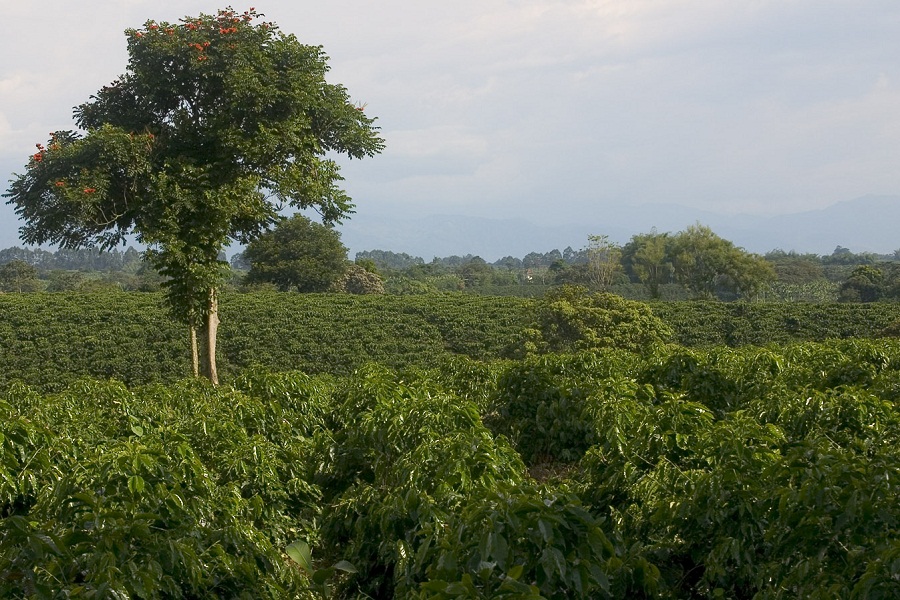April 27, 2012


By knowing where the coffee process begins and ends, you as an individual can ensure that you are drinking coffee that was produced in a way that is sustainable and does not harm rainforests. (Photo by Shaun McRae, Wikimedia Commons)
[nggallery id=182 template=carousel images=4][imagebrowser id=182] By Kavitha Pramod Most of us start our day with a nice, hot cup of coffee. When taking that first aromatic sip, do you ever stop to wonder about the journey the humble coffee bean has taken to end up in your mug? The process from the planting of a coffee bean to the coffee in your cup is a long and complicated journey that can be done in either a sustainable way, or an environmentally destructive way. The process starts with the simple planting of a coffee bean. Coffee beans themselves are seeds that, if not dried and processed, will grow into a new coffee tree. Approximately three to four years after being planted, the coffee plant will begin to bear fruit in the form of bright red cherries. Each cherry contains the beans that will later be processed into coffee. When the cherries turn from a bright red to a deep, dark red they are ready to be harvested. In many countries, harvesting is still done by hand in an extremely long and involved process. In countries where it is feasible, the harvesting is usually done by machine. After they are harvested, the coffee cherries are processed by either a dry method or a wet method, depending on where the harvesting is taking place. In the dry method, the cherries are simply spread out in an area to dry. In the more complicated wet method, the cherries are put into water for the extra pulp to be removed, and after being further processed, the remaining beans are finally laid out to dry. After the harvesting process is complete, the beans are milled. First, any extra layers on the beans are removed. The beans are then polished and sorted before being exported to the country that is purchasing them. Once they reach the importing country, the beans are tasted for quality and then roasted. Finally, you (or the local café’s barista) grind them and put them into the coffee maker to pour into your cup. To see how this process happens in more detail, visit the National Coffee Association’s Ten Steps to Coffee. It is without doubt that coffee harvesting and production plays a very important role in the economies of many countries. While the process seems straightforward enough, there are unfortunately areas where environmentally destructive mass-production is replacing traditional coffee farming. According to the Rainforest Alliance, the areas where coffee plants normally grow are lush and leafy parts of the rainforest. These areas are also the primary habitat for many plant and animal species. During the 1970s, to increase coffee production, a process of mass-production was started where natural coffee plant habitats were stripped away and replaced with dense farms that were saturated with chemicals. This lead to a number of environmental problems and also began producing bland and flavorless coffee. In 1993, the Rainforest Alliance, an organization with the mission to preserve the biodiversity and sustainability of the world’s rainforests, stepped into the world of coffee growing. The Rainforest Alliance, along with some partner groups, emphasized the importance of areas where coffee plants naturally grow and that these areas are important for many forms of plant and animal wildlife. The Rainforest Alliance began a program to help farmers manage their coffee farms in a natural way to avoid stripping that land for massive farms. Any coffee that comes from these diverse and natural coffee farms is packaged with the Rainforest Alliance CertifiedTM seal of approval. If you are wondering what you can do to make sure that the coffee you are drinking was produced sustainably, here are some steps you can take. In addition to following Sierra Club Green Home‘s suggestions to Green Your Caffeine, you can look for the Rainforest Alliance label on your coffee packages. You can also inquire at your favorite café about its coffee source, and whether it is grown sustainably. Recently, Caribou Coffee made news by becoming the first large-scale coffee chain to switch to 100% Rainforest Alliance Certified coffee. In doing so, they have set an excellent example for all other major coffee chains. We all know that coffee plays an important part in our morning rituals. By being aware of where this familiar drink comes from, we can take steps to support the sustainable development and management of coffee farms around the world. For related article, see: Green Your Caffeine © 2012 SCGH, LLC.]]>